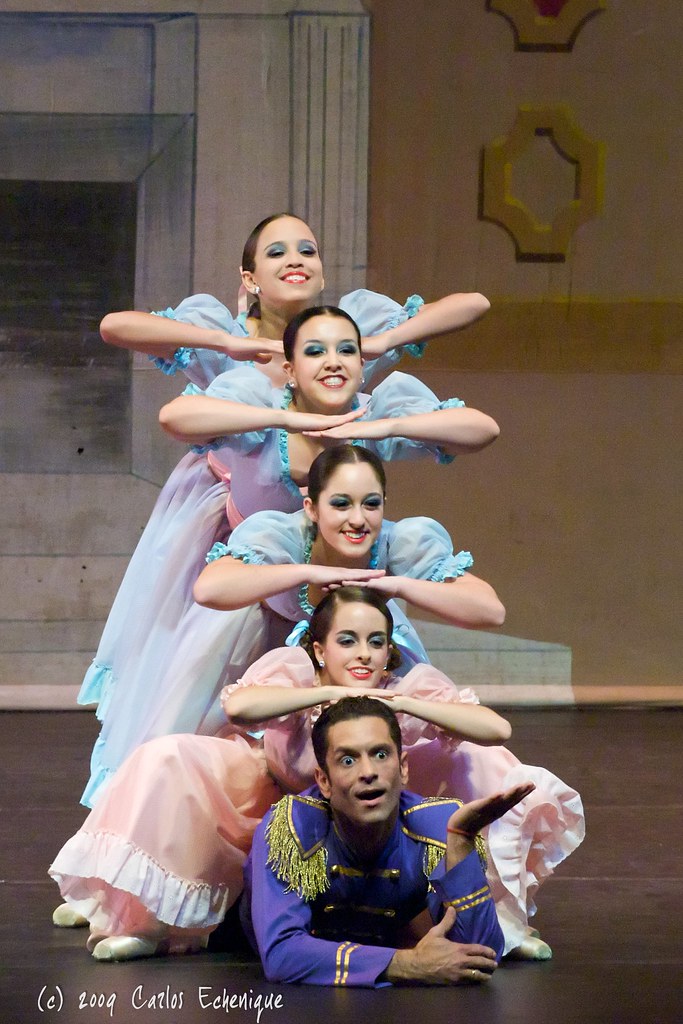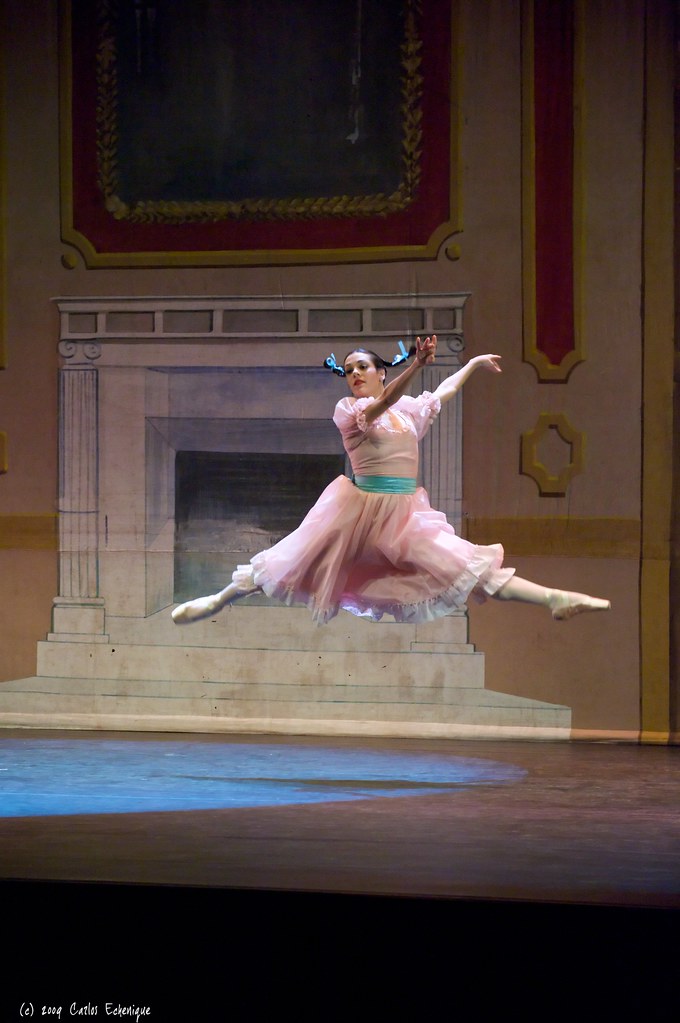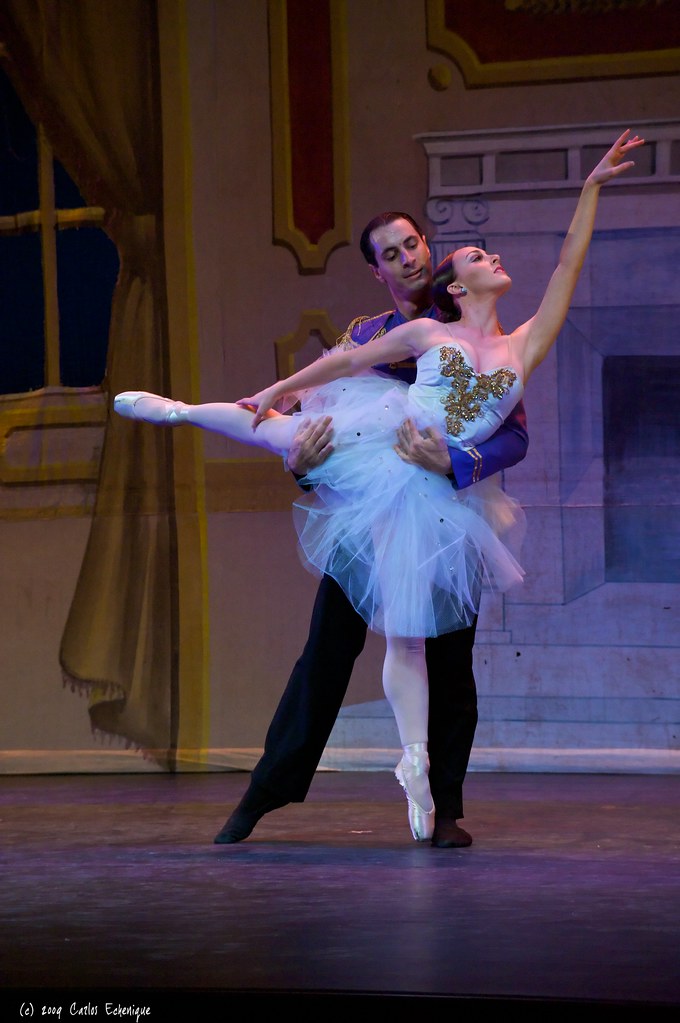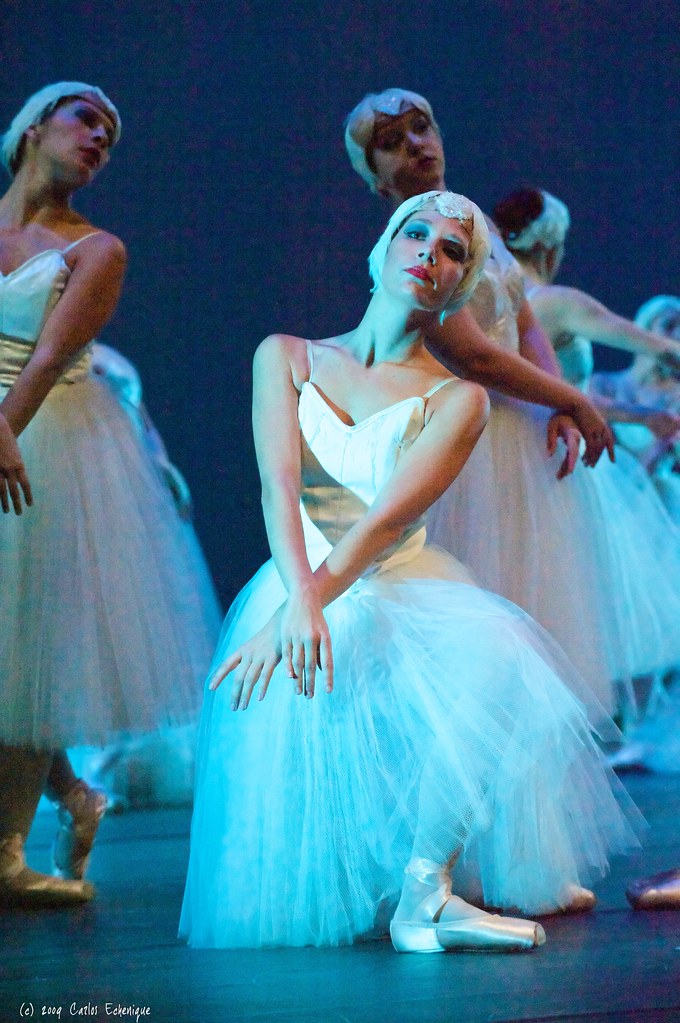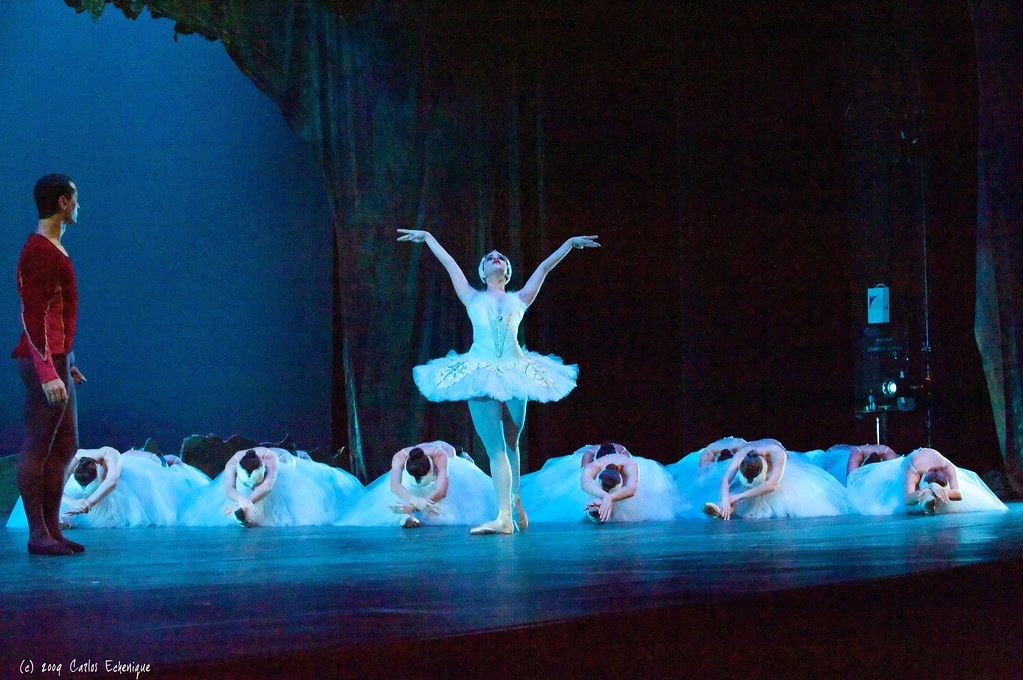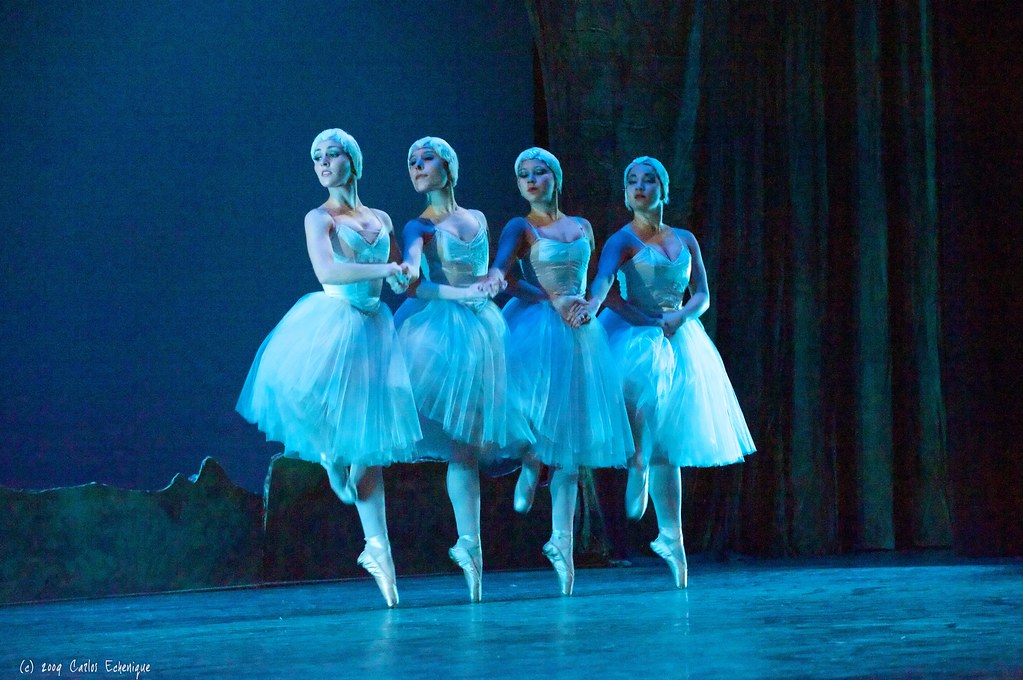Wow,
Graduation Ball and
Swan Lake Act II... makes me really nostalgic for the classics! I haven't had any tutu ballets to photograph all season. Didn't you say there was also a third work on the program? What was it?
Tough light or no tough light, I think your
Grad Ball set looks good. I agree that some of them would have been improved by more judicious cropping, but I also know there isn't always time when you've just gotten back from the dress rehearsal with hundreds of shots that everybody is hoping to see by opening night!
i figure that the key points of interest in this
Grad Ball are the facial expressions and character interactions, and you seem to have nailed them. I especially like the ending pose of the Monkey Dance (stack of heads) and the Pigtail Girl being lifted. Speaking of lighting, the two shots of the couple (arabesque lift and "fish" pose) have a nice magenta rim-light effect -- good eye to notice that and work with it.
About the
Swan Lake shots, though... I have to agree with everybody else who's saying you've got to find a way to get away from ISO 25,600. Not only does it stick you with a lot of chroma noise, it seems to be burning out highlight detail -- not ideal when you've got a stage full of white tutus! I'm not criticizing you or trying to give you a hard time -- I've been in exactly the same spot lots of times and I know sometimes what you can do is all you can do. I'm just suggesting that you try to think outside the box and see if there aren't some different ways to solve the problems of shooting in that particular space.
For example:
-- You mentioned that you have to shoot at f/5.6 because of all the AF "misses" you get in tracking mode. What would you think of using spot AF and no tracking? This is how I usually shoot performances that have enough background clutter to lure the AF system away from my intended subject. Yes, your thumb gets tired because you're on and off the AF lock button all evening, but with more control you might be able to shoot at f/2.8 more often. Worth a try?
-- Also, I know it doesn't give you the flexibility, but when you're shooting in this theater, might you want to take along, say, a 50/1.4 or an 85/1.8 for the really dimly-lit scenes? Not only would this let you dial down your ISO to a more quality-oriented setting, but I find that often AF seems to track better with a really wide-aperture lens because there's more difference between in-focus and out-of-focus areas; the latter are so blurry that they're less likely to pull the AF offline.
As a case in point (and to get a tutu photo of my own) I pulled out this shot of
Le Corsaire from a couple of seasons ago. The reason I picked this one is that the lighting was only a bit brighter than what you had for
Swan Lake. And I was using a D80, which doesn't have nearly the low-light performance of your D700.
But I think you can see that it looks cleaner -- simply because I shot at f/2.8 and was able to use ISO 3200. If I had gone to f/5.6, I would have had to shoot at ISO 12,800, at which setting the D80's image quality kind of falls off a cliff! Your D700 has at least one stop better high-ISO quality than the D80, so you should be able to shoot at 6400 with better quality that I was getting at 3200. But even with the D700, ISO 25,000+ seems to be a bridge too far...
I know, there are always tradeoffs and maybe under your specific conditions you made the only choice that would have worked. And as I said, I'm not trying to give you a hard time -- just trying to encourage you to try some different sets of tradeoffs. The
Swan Lake shots are really evocative, and I think your future shoots in this theater will be even better if you can work out some strategies for using less-ambitious ISOs. Good luck!
